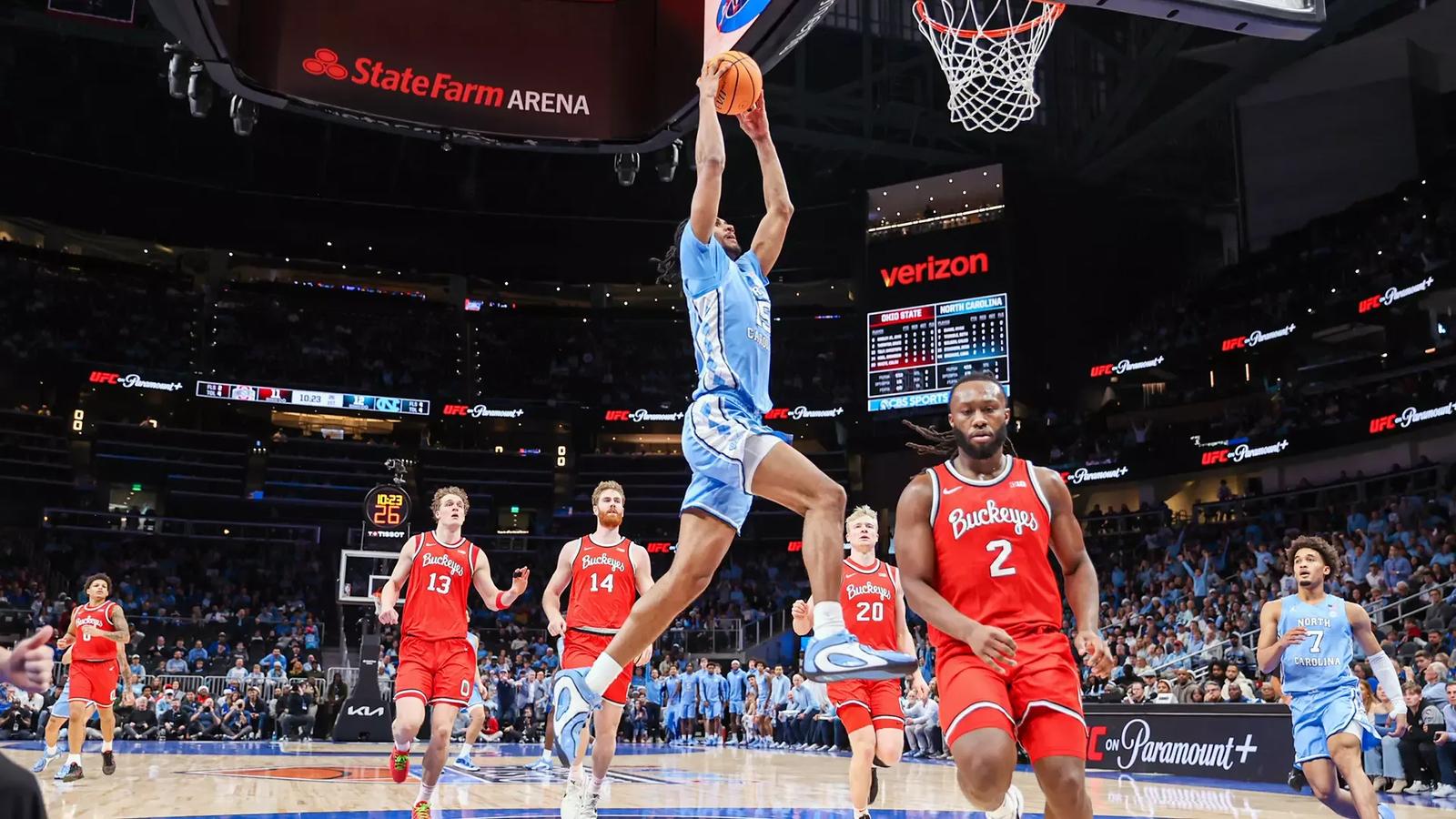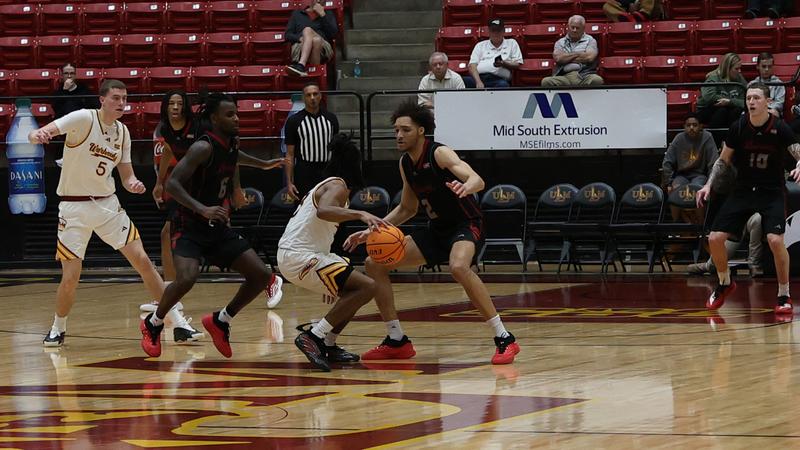The Blazers had four players score in double figures with Molly Moffitt leading…
Blog
-

The Blazers Earn 24-Point Over Mississippi Valley State
BIRMINGHAM – UAB women’s basketball (6-5) earned a 24-point win with an 86-62 victory over Mississippi Valley State (1-10) on Saturday afternoon at Bartow Arena. -

NDSU Wrestling Falls to #23 Stanford, #1 Penn State in Nashville
NASHVILLE, Tenn. – North Dakota State wrestling dropped both duals at the Journeyman Collegiate National…
Continue Reading
-

A key piece of Port Arthur-era gun reform remains unfinished. Could it have helped prevent the Bondi attack? | Gun control
A national firearms register, which would track weapons across the country in real time, was a priority for law enforcement and gun control advocates after the 1996 Port Athur massacre.
But almost 30 years later, it remains unfinished.
The…
Continue Reading
-

Racers Cruise to Seventh Straight Win to Finish Non-Conference Play
Haven Ford scored a game-high 23 points to lead Murray State to a dominant 101-44 victory over Lindsey Wilson on Saturday afternoon at the CFSB Center.
The Racers (9-2) established control early, jumping out to a 31-12 lead in the first quarter…
Continue Reading
-
The request could not be satisfied
ERROR: The request could not be satisfied
The request could not be satisfied.
Request blocked.
We can’t connect to the server for this app or website at this time. There might be too much traffic or a configuration error. Try again later, or…Continue Reading
-

Lucas: Ohio State Rapid Reactions
By Adam Lucas1. Isn’t it nice to have a full roster again? Seth Trimble returned and scored 17 points in 36 minutes, Henri Veesaar (17 points and 10 rebounds) and Caleb Wilson were steady again, and the Tar Heels beat Ohio State 71-70.
2. Really…
Continue Reading
-
Dr. Falah Maroun – Carnell’s Funeral Home, Providing caring, compassionate and courteous services since 1804
For those unable to attend the service for Dr. Maroun, please click HERE to view the livestream.
It is with heartbreak that we announce the passing of Dr Falah Bechara Maroun, surrounded by his family, on December 19th 2025 at 90 years of age.
Falah was born in Beit- Meri, Lebanon in 1935 and found himself in St. John’s, NL when he came, having graduated from the Neurological Institute in Montreal, to do a locum as a neurosurgeon. He remained in St John’s, following a second locum, after being “abducted” from the plane by Dr Ted Shapter.
Through his work as a neurosurgery pioneer, a skilled physician, an avid gardener and a novice fly fisherman, he touched the lives of so many people. Bonnie always said, if he hadn’t become a physician he would have been a fisherman or a farmer.
Falah was a gifted surgeon in both the operating room and at the bedside. Many people close to Falah would have heard of his 4 C’s. The principals that he followed as a physician as they related to his patients: competence, care, compassion and communication.
He lived all aspects of his life to the fullest. He shared his joy of life with all those that he interacted with. He was an advocate for peace and kindness. Ecumenical, he held the respect of many different religions, beliefs, colors and creeds.
Falah was recognized for his work in Newfoundland and Labrador, Canada, Lebanon and St. Pierre and Miquelon. He received numerous awards for his contributions throughout the medical field.
Predeceased by his parents Bechara and Eugenie Maroun, his brothers Salah, Najah, Kahlil and Sabah, several dear cousins, numerous close friends and parents in law George and Joan Marshall.
Leaving to mourn his beloved wife Bonnie, daughter Rindala (Matthew) and grand-daughter Mackenzy, sister Claude and sister in laws, Rosette (in Paris), Gladys (in Lebanon), Fadia (in Lebanon), Lynda (David – in B.C), Janet (Geoffrey – deceased – in PEI) and Jill (Gary – in NL). Along with numerous nieces and nephews and their families in Canada, the U.S, France and Lebanon.
Special thanks to all his colleagues and friends who visited him in the hospital, engaging him in medical conversations and who brought their good wishes with them. And to Dr Andre Engelbrecht, through his care, allowed us to share his life a little longer.
Thank you to ALL the doctors and nurses in Emerg, ICU and 4SouthB at the Health Sciences Center. A very special thanks to Nurse Kat, who followed the 4 C’s to a tee, the ICU is lucky to be getting you in the new year.
As per his request, cremation will have taken place before visitation. Visitation will be held December 29th 2025 from 2pm-4pm and 7pm-9pm and December 30th 2025 from 10am-12pm at Carnell’s Funeral Home – Freshwater Road, St. John’s.
Service will follow on December 30th at 2pm at Carnell’s Chapel.
Flowers are welcomed or a donation can be made in Falah’s name to your favorite charity.
We will love and miss you forever,
Your Family
Continue Reading
-
Astronomers May Have Spotted a Never-Before-Seen “Superkilonova” Hidden Inside a Supernova – SciTechDaily
- Astronomers May Have Spotted a Never-Before-Seen “Superkilonova” Hidden Inside a Supernova SciTechDaily
- Possible “Superkilonova” Exploded Not Once But Twice Caltech
- Astronomers may have spotted the 1st known ‘superkilonova’ double star…
Continue Reading

